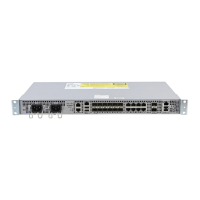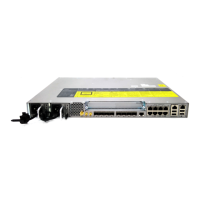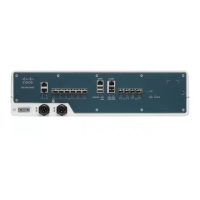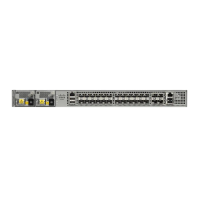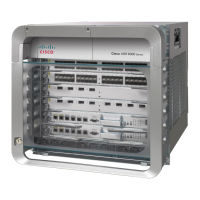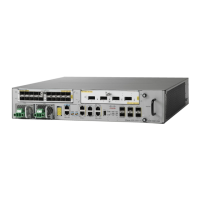•
To use nonstop forwarding (NSF) and In Service Software Upgrade (ISSU), stateful switchover (SSO)
must be configured and working properly.
Restrictions for Configuring Ethernet Local Management
Interface at a Provider Edge
•
Ethernet Local Management Interface (LMI) is not supported on routed ports, EtherChannel port channels,
ports that belong to an EtherChannel, private VLAN ports, IEEE 802.1Q tunnel ports, Ethernet over
Multiprotocol Label Switching (MPLS) ports, or Ethernet Flow Points (EFPs) on trunk ports.
•
Ethernet LMI cannot be configured on VLAN interfaces.
Information About Configuring Ethernet Local Management
Interface at a Provider Edge
Ethernet Virtual Circuits Overview
An Ethernet virtual circuit (EVC) as defined by the Metro Ethernet Forum is a port level point-to-point or
multipoint-to-multipoint Layer 2 circuit. EVC status can be used by a customer edge (CE) device to find an
alternative path in to the service provider network or in some cases to fall back to a backup path over Ethernet
or another alternative service such as ATM.
Ethernet LMI Overview
Ethernet Local Management Interface (LMI) is an Ethernet Operation, Administration, and Management
(OAM) protocol between a customer edge (CE) device and a provider edge (PE) device. Ethernet LMI provides
CE devices with the status of Ethernet virtual circuits (EVCs) for large Ethernet metropolitan-area networks
(MANs) and WANs and provides information that enables CE devices to autoconfigure. Specifically, Ethernet
LMI runs on the PE-CE User-Network Interface (UNI) link and notifies a CE device of the operating state of
an EVC and the time when an EVC is added or deleted. Ethernet LMI also communicates the attributes of an
EVC.
Ethernet LMI interoperates with Ethernet Connectivity Fault Management (CFM), an OAM protocol that
runs within the provider network to collect OAM status. Ethernet CFM runs at the provider maintenance level
(user provider edge [UPE] to UPE at the UNI). Ethernet LMI relies on the OAM Ethernet Infrastructure (EI)
to interwork with CFM to learn the end-to-end status of EVCs across CFM domains.
Ethernet LMI is disabled globally by default. When Ethernet LMI is enabled globally, all interfaces are
automatically enabled. Ethernet LMI can also be enabled or disabled at the interface to override the global
configuration. The last Ethernet LMI command issued is the command that has precedence. No EVCs, Ethernet
service instances, or UNIs are defined, and the UNI bundling service is bundling with multiplexing.
Carrier Ethernet Configuration Guide (Cisco ASR 920 Series)
286
Configuring Ethernet Local Management Interface at a Provider Edge
Restrictions for Configuring Ethernet Local Management Interface at a Provider Edge

